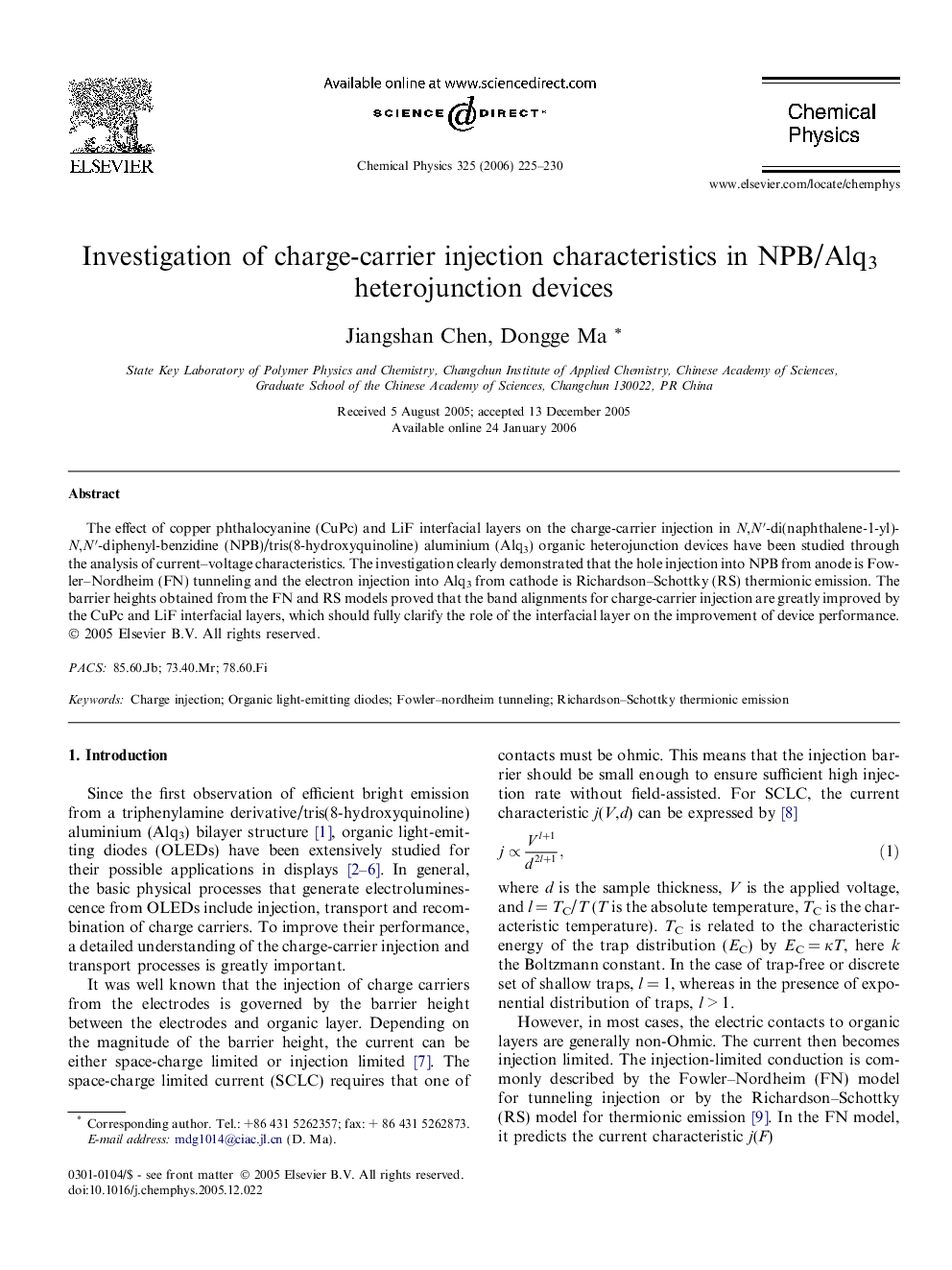| Article ID | Journal | Published Year | Pages | File Type |
|---|---|---|---|---|
| 5376969 | Chemical Physics | 2006 | 6 Pages |
Abstract
The effect of copper phthalocyanine (CuPc) and LiF interfacial layers on the charge-carrier injection in N,Nâ²-di(naphthalene-1-yl)-N,Nâ²-diphenyl-benzidine (NPB)/tris(8-hydroxyquinoline) aluminium (Alq3) organic heterojunction devices have been studied through the analysis of current-voltage characteristics. The investigation clearly demonstrated that the hole injection into NPB from anode is Fowler-Nordheim (FN) tunneling and the electron injection into Alq3 from cathode is Richardson-Schottky (RS) thermionic emission. The barrier heights obtained from the FN and RS models proved that the band alignments for charge-carrier injection are greatly improved by the CuPc and LiF interfacial layers, which should fully clarify the role of the interfacial layer on the improvement of device performance.
Keywords
Related Topics
Physical Sciences and Engineering
Chemistry
Physical and Theoretical Chemistry
Authors
Jiangshan Chen, Dongge Ma,
